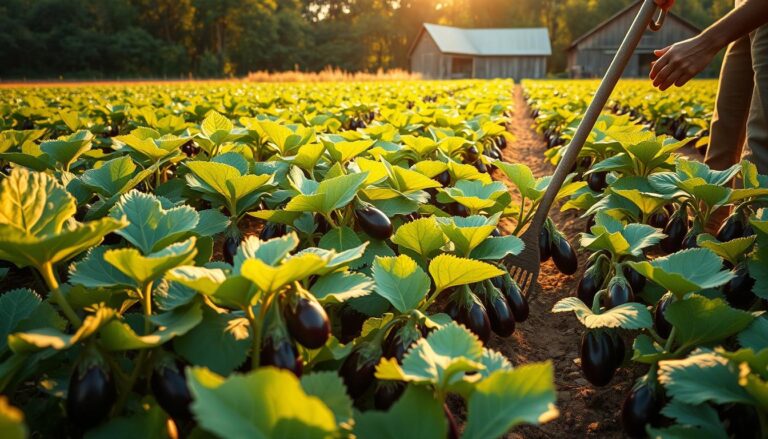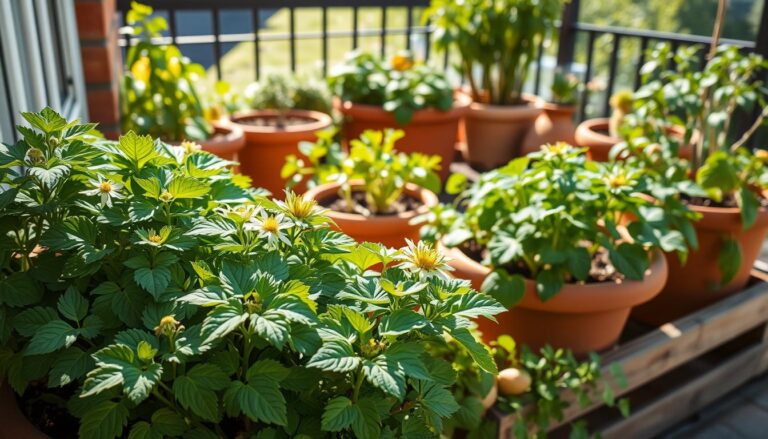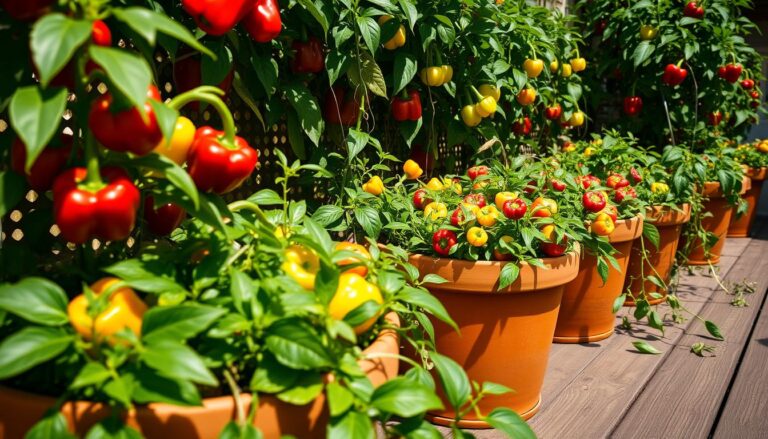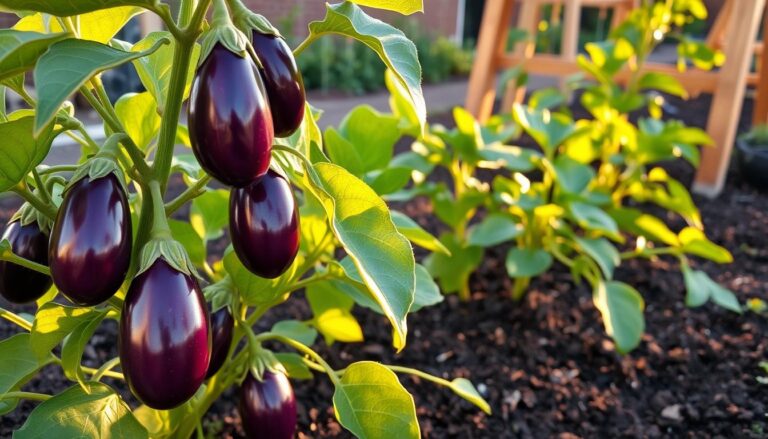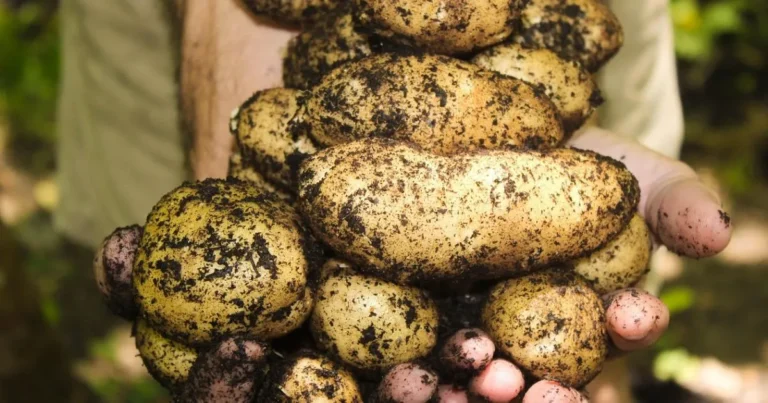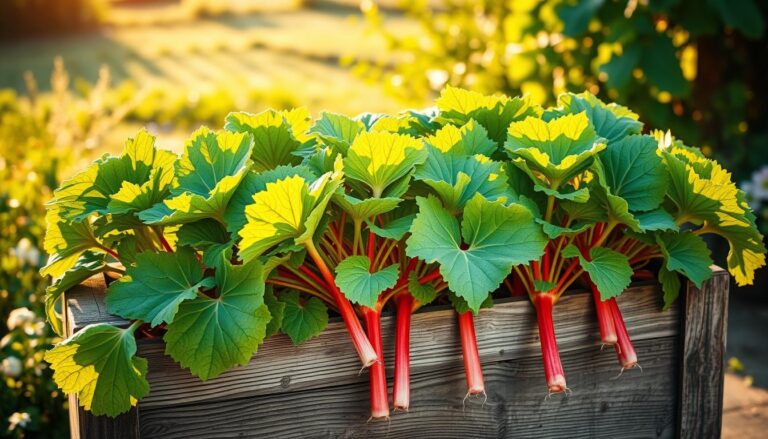Planting Potatoes in Pots: Step-by-Step Instructions

Table of Contents
Planting Potatoes in Pots: Step-by-Step Instructions
Growing your own potatoes in containers is rewarding. It gives you a lot of potatoes with little space. You can have fresh, homegrown potatoes even with small garden space.
Container potato gardening is easy and great for beginners. With a few simple steps, you can grow tasty potatoes in pots on your patio or balcony.
This article will show you how to do it. You’ll learn about choosing the right containers and harvesting your potatoes. You’ll also find out how to make a great place for your potatoes to grow.
Key Takeaways
- Choose the right container for growing potatoes.
- Select a suitable potato variety for container gardening.
- Understand the importance of soil quality and preparation.
- Learn the step-by-step process for planting and caring for your potatoes.
- Discover tips for maximizing your container potato harvest.
Why Grow Potatoes in Containers?
Potatoes can grow well in containers, giving you a big harvest in small spaces. This gardening method is both productive and flexible. It lets anyone grow potatoes, no matter how much space they have.
Benefits of Container Potato Gardening
Container gardening for potatoes has many advantages. It lets you control the soil better, which lowers disease risks. You can also move your potatoes to the best sunlight and temperature spots. Plus, it’s easy to get your potatoes since you can just empty the container.
The benefits can be summarized in the following table:
| Benefit | Description |
|---|---|
| Better Soil Control | Reduces the risk of soil-borne diseases |
| Flexibility | Move containers to optimal sunlight and temperature |
| Easier Harvesting | Empty containers to retrieve tubers |
Space-Saving Solution for Urban Gardeners
For city gardeners, growing potatoes in containers is a space-saving solution that doesn’t cut down on yield. You can put containers on balconies, patios, or even indoors if it’s light enough. This allows urban dwellers to enjoy fresh, homegrown potatoes without the need for a large garden.
Ask ChatGPTThis way, city folks can enjoy fresh, homegrown potatoes without needing a big gard en.
To make the most of space, think about using vertical containers or stacking pots. This not only saves space but also makes your urban garden look good.
Choosing the Right Containers for Growing Potatoes
Choosing the right container is key in container potato gardening. The container you pick affects your potato plants’ health and yield.
Size and Depth Requirements
Container size matters a lot. A deeper container means more soil and a bigger root system. This leads to a bigger harvest. Look for a container that’s at least 12-18 inches deep for your potatoes to grow well.
Best Materials for Potato Containers
The material of your container impacts soil temperature and moisture. Breathable materials like fabric or wood are great. They help control soil temperature and prevent waterlogging. Plastic and metal containers work too, as long as they have drainage holes.
Drainage Considerations
Drainage is crucial to avoid waterlogged soil. This can cause root rot and other issues. Make sure your container has multiple drainage holes to let water out.
| Container Material | Breathability | Drainage |
|---|---|---|
| Fabric | High | Excellent |
| Wood | Medium | Good |
| Plastic | Low | Variable |
| Metal | Low | Variable |
Selecting Potato Varieties for Container Growing
Choosing the right potato variety is key for a great container garden. There are many types, each with its own traits. Knowing these differences helps you pick the best one.
Early, Mid-Season, and Late Varieties
Potatoes are grouped into early, mid-season, and late types by how long they take to grow. Early varieties grow fast, ready in 70-100 days. They’re perfect for containers because they don’t spread out much.
Mid-season varieties need 100-120 days to grow. They offer a good balance between yield and time. Late varieties take over 120 days. They might be too big and long to grow in containers.
Best Potato Types for Container Gardening
For container gardening, pick varieties that do well in small spaces. ‘Nicola’, ‘Maris Piper’, and ‘Charlotte’ are good choices. They’re productive and fight off some diseases.
When growing potatoes in buckets or pots, think about their growth and disease resistance. “Growing potatoes in containers lets you control the soil and lower disease risk,” says a gardening expert.
“Container gardening allows for a level of control over growing conditions that can significantly improve potato yields.”
Also, think about the size, taste, and texture of the tubers. This ensures they fit your cooking needs.
Preparing Your Containers for Planting Potatoes in Pots
Before you start planting potatoes in pots, it’s important to get your containers ready. This ensures a healthy and productive harvest. You need to follow a few key steps to create the perfect environment for your potatoes.
Soil Mix Requirements
The soil mix is crucial for container potato gardening. You need a mix that drains well and is loose, with lots of organic matter. A good mix is made from compost, peat moss, and perlite or vermiculite. This mix gives your potatoes the nutrients and air they need.
Adding Fertilizer and Amendments
To make your soil mix even better, add a balanced fertilizer as directed. Also, think about adding bone meal or kelp meal for slow nutrient release. As one expert says, “A well-fertilized soil is key to a bountiful harvest.”
“The right fertilizer can make all the difference in the yield and health of your potatoes.”
Setting Up Proper Drainage
Good drainage is key to avoid waterlogged soil. This can cause rot and diseases. Make sure your container has enough drainage holes. You can also add small rocks or broken pottery at the bottom for better drainage. This simple step can greatly help your potatoes’ health.
By following these steps, you’ll be well on your way to creating a great environment for planting potatoes in pots. Proper preparation is crucial for a successful harvest. So, take the time to get it right.
Step-by-Step Guide to Planting Potatoes in Containers
Enjoy a bountiful harvest of potatoes from your containers with the right techniques. Planting potatoes in containers is easy. It involves several key steps.
Preparing Seed Potatoes
Start by preparing your seed potatoes. Choose healthy, disease-free seed potatoes. Cut them into pieces, making sure each has at least one eye. Let the cut pieces dry for a day or two to form a callus. This helps prevent rot.
Proper Planting Depth and Spacing
When planting, place the seed potato pieces about 2-3 inches deep in the container. Make sure the eyes face upwards. For larger containers, plant multiple seed potatoes, spacing them about 6 inches apart.
Initial Watering and Placement
After planting, water the container gently but thoroughly. Place it in a sunny spot, but not too hot. Potatoes grow best in cooler temperatures, especially when producing tubers.
The Hilling Process for Container Potatoes
As your potato plants grow, add more soil or compost around the base. Leave only a few leaves exposed. This “hilling” process encourages more tubers to form. Keep repeating until the container is almost full.
By following these steps, you’ll grow delicious potatoes in containers. Keep the soil moist and enjoy your homegrown potatoes.
Caring for Your Container Potatoes
To get a good harvest from container potatoes, you need to give them the right care. This means knowing what they need, like water, food, and protection from pests and diseases.
Watering Requirements
Watering is key for container potatoes. The soil should be moist but not too wet. Check if the soil is dry by feeling it with your finger. If it’s dry, it’s time to water. Avoid overwatering to prevent rot and diseases.
Fertilizing Schedule
Fertilizing is important for healthy growth and more potatoes. Use a balanced fertilizer (like 10-10-10 NPK) once a month. You can also use a high-potassium fertilizer to help potatoes grow. Follow the manufacturer’s instructions to avoid harming your plants.
Light and Temperature Needs
Potatoes need lots of sunlight to grow well. Place your containers in a sunny spot. The best temperature for growing potatoes is between 60°F and 70°F (15°C and 21°C). Don’t let them get too hot or cold.
Pest and Disease Management
Watch out for pests like aphids and potato beetles. Check your plants often and remove any sick or infested leaves. Use natural or integrated pest management (IPM) to deal with any problems.
“Prevention is key when it comes to managing pests and diseases in container potatoes.”
| Care Aspect | Requirements |
|---|---|
| Watering | Keep soil moist but not waterlogged |
| Fertilizing | Balanced fertilizer (10-10-10 NPK) once a month |
| Light | Full sun |
| Temperature | 60°F to 70°F (15°C to 21°C) |
Troubleshooting Common Problems When Growing Potatoes in Pots
Growing potatoes in pots can sometimes come with challenges. But, knowing how to fix these issues can lead to a great harvest.
Yellowing Leaves and Stunted Growth
Yellow leaves and slow growth are common problems. They might be caused by too much or too little water. Check the soil moisture often and adjust your watering.
Nutrient shortages can also cause these signs. Using a balanced fertilizer can help provide what your potatoes need.
Dealing with Potato Blight and Other Diseases
Potato blight is a big disease threat. To fight it, remove sick leaves and make sure plants have air to breathe. Use potato-specific fungicides too.
Keep a close eye on your plants for any signs of disease.
Managing Pests in Container Potatoes
Aphids and potato beetles can be pests. Use natural pest control like neem oil or insecticidal soap. Check your plants often and remove pests.
Keeping your containers clean can also help avoid pests.
Harvesting and Storing Your Container-Grown Potatoes
Harvesting potatoes from your container garden is a rewarding experience. It marks the end of your hard work. To enjoy your homegrown potatoes all year, you must harvest them correctly.
When to Harvest
The right time to harvest depends on the variety and plant condition. It’s when the plants start to yellow and die back. For new potatoes, check a few weeks after the plants finish flowering.
Harvesting Techniques for Container Potatoes
Carefully dig into the container with a fork, avoiding damage to the tubers. For containers, you can often just tip them out and collect the potatoes. This method is especially useful for growing potatoes in buckets, making it easy to access your harvest.
Storing Your Homegrown Potatoes
Store your harvested potatoes in a cool, dark place with good ventilation. Avoid washing them before storage; instead, gently brush off any excess soil. Proper storage is key to enjoying your potatoes from how to grow potatoes in a container efforts for months to come.
Conclusion
You’ve learned how to grow potatoes in containers. This includes choosing the right containers and picking the best potato varieties. You also know how to care for your plants and harvest your potatoes.
Container potato gardening is perfect for city dwellers. It’s also rewarding for anyone wanting to grow their own food. By following this guide, you can enjoy a lot of tasty potatoes.
Planting potatoes in containers lets you control the soil and sunlight. This makes growing potatoes easier. Whether you’re new to gardening or experienced, growing potatoes in containers is a great start.
With the right care, you’ll soon enjoy your homegrown potatoes. So, why not try container potato gardening? Start planting today and enjoy the thrill of growing your own food.
FAQ
How do I grow potatoes in a container?
To grow potatoes in a container, choose a container with good drainage. Fill it with a mix of soil and compost. Plant seed potatoes 2-4 inches deep.Keep the soil moist. Add more soil or mulch as the plants grow.
What type of potatoes are best for container gardening?
Early varieties of potatoes are best for containers. They mature quickly and yield a lot in a short time.
How often should I water my container potatoes?
Container potatoes need consistent moisture, especially when they’re producing tubers. Check the soil regularly. Water when the top inch feels dry.
Can I use a bucket to grow potatoes?
Yes, you can grow potatoes in a bucket. Make sure it has drainage holes to prevent waterlogged soil. The bucket should be at least 12-18 inches deep for root growth.
How do I know when my container potatoes are ready to harvest?
Container potatoes are ready when the plants start to yellow and die back. Dig through the soil with your hands or a fork. Be careful not to damage the tubers.
What are some common problems when growing potatoes in containers?
Common issues include yellowing leaves, stunted growth, and pests or diseases. Check your plants regularly. Take action promptly if you notice any problems.
How do I store homegrown potatoes from containers?
Store harvested potatoes in a cool, dark place with good ventilation. Avoid washing the potatoes before storing. This can reduce their storage life.

